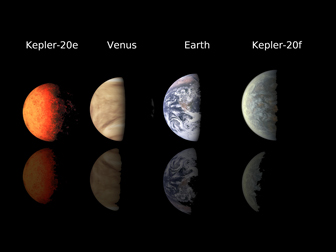NASA scientists, including astronomers from NASA Ames and UC Berkeley, today announced they've discovered two rocky planets, each about the same size as Earth, orbiting a star almost 1,000 light years away.

The Kepler project uses a space-based telescope to constantly monitor some 200,000 stars in the Milky Way system. Based on tiny flickerings of light, NASA scientists can detect whether planets are orbiting those stars, and roughly what they look like. The goal is to find one that’s both the right temperature and the right size to sustain life. Last month, scientists announced that they’d found a planet whose temperature might be somewhat Earth-like, but which was too large and gaseous for life to take root.
The two planets that NASA announced it had found fit the second criterion: They’re small, with rocky surfaces. These are the first such planets ever discovered outside our own solar system. Until recently, scientists feared such planets’ tiny size might make them undetectable. The two planets, Kepler-20e and Kepler-20f, could be considered just one more milestone in the search for Earth-like planets, said Francois Fressin of the Harvard-Smithsonian Center for Astrophysics in Cambridge, Massachussetts.
“But it’s the most important milestone,” said Fressin, “because it demonstrates for the first time that Earth-sized planets exist around stars and that we are able to detect them.”
Both planets are too hot to have water. Kepler-20e is about 1,400 degrees Fahrenheit, hot enough to melt glass. Kepler-20f has a surface temperature of about 800 degrees Fahrenheit. But scientists believe it wasn’t always so hot on Kepler-20f, and that the planet may have spent several billion years in a much cooler state, temperate enough to have retained water and, thus, nurtured life.